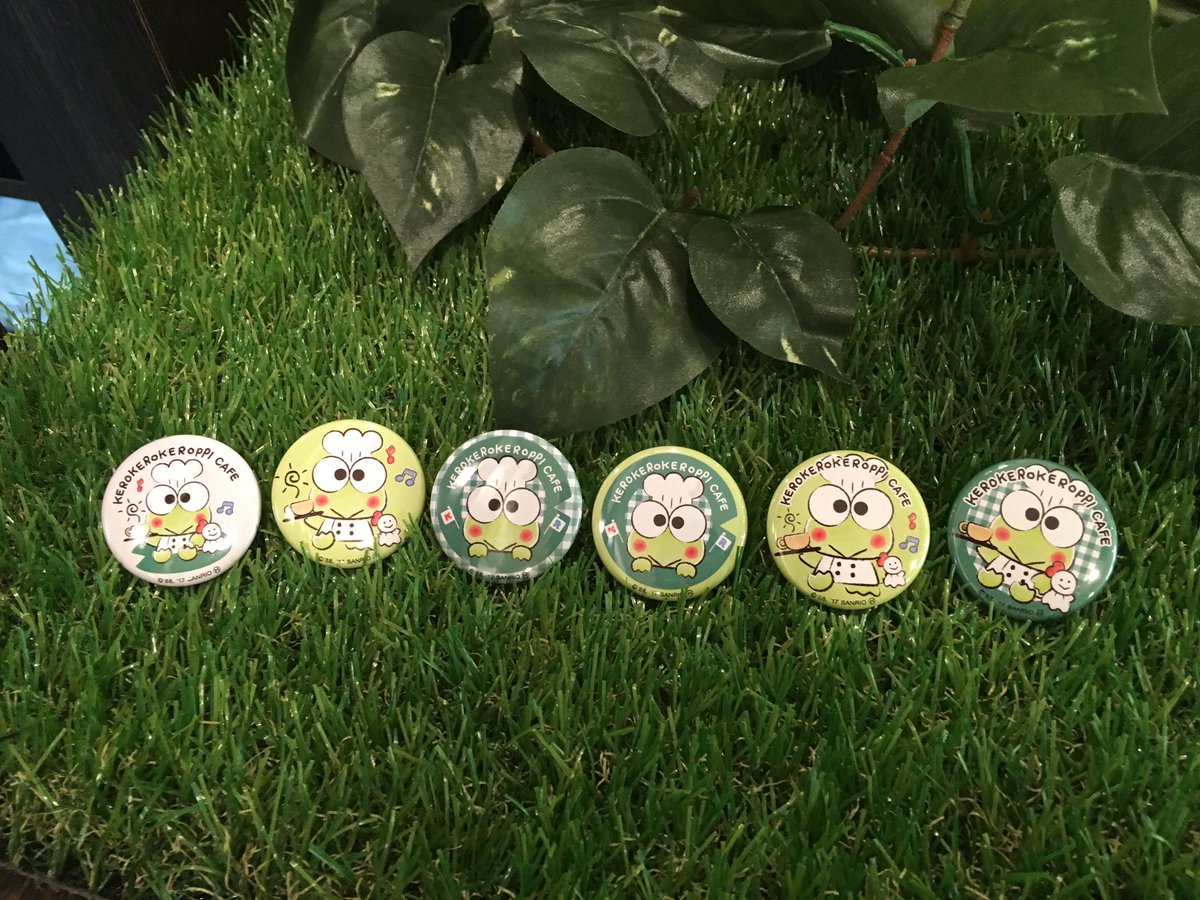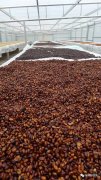Flavor characteristics, producing areas and cooking parameters of single bean in Incht Manor, Guatemala

Professional barista communication, please pay attention to coffee workshop (Weixin Official Accounts cafe_style)
Guatemala Inchter Estate Single Bean Difference, Differentiation and Awards
El Injerto Estate is located in Vivitenango, a stunning coffee-growing region with steep peaks and narrow valleys that receive warm air from the neighboring lowland valleys of Mexico, which warms the mountainsides and allows coffee to grow at such high altitudes that are usually impossible at such North Korean altitudes.
El Injerto Estate quickly became a world legend for the quality of its coffee, winning a total of 16 awards in 11 years of participation in the Guatemala Cup Of Excellence (C.O.E), far more than any other estate in the world. Every year the Aguirre family continuously improves the quality of production on their estate, the team paying attention to all details of the entire process, including the floating flow of coffee fruits, fermentation, steeping, drying, proper storage, and the estate's own drying yard.
El Injerto Manor has also been certified by the Rain Forest Alliance (RFA). Not only that, the Rainforest Alliance visits certified coffee gardens every year and evaluates and scores them. El Injerto Manor has received high scores of 90 points or more, which is called the top student of the Rainforest Alliance.
Guatemala Guatemala
Population: 15,438,000
Guatemala has been more successful than most in defining its coffee focus areas and developing markets with very different marketing models. In my experience, coffee from this region has a consistent flavor profile, but there is no hard and fast way to specify this.
SAN MARCOS
San Marcos is both the warmest and wettest coffee-growing region in Guatemala. On the slopes facing the Pacific Ocean, the rainy season comes earlier, so flowering is earlier than usual. Rainfall has a large impact on post-harvest drying, so some farms mix sun and mechanical drying. Agriculture is the mainstay of the region's economy, and it also produces food, fruit, meat and wool.
Altitude: 1300--1800m
Harvest: December-March
Breeds: Bourbon, Caturra, Catuai
ACATENANGO
Akatango The coffee producing area of this region surrounds the Akatango Valley region, named after the volcano. In the past, many producers sold coffee to "coyotes," through which the fruit was exported to Antigua, where it was processed. This is because Antigua coffee enjoys a better reputation and can be sold at a higher price. This practice is less common now, since the Akatnam specialty coffee produces excellent coffee beans, and the increasingly widespread recognition that coffee beans in the region are not only profitable but traceable.
Altitude: 1,300- 2,000 m
Harvest: December-March
Breeds: Bourbon, Caturra, Catuai
ATITLAN
The coffee farms in Atitlan are situated around Lake Atitlan. Located at an elevation of 1500 meters (4900 feet), the lake has captured the hearts of writers and tourists for years because of its unparalleled beauty. Strong winds are common here in the late morning and early afternoon, and locals call them "xocol," meaning "wind that takes away sin." Here, a number of private nature reserves have been established to protect the biodiversity of the area and help prevent deforestation. Due to rising labor costs and competition for labor, coffee production is under pressure. Urban sprawl has also increased pressure on land use, with some farmers finding it more profitable to sell their land than to continue growing coffee.
COBAN
Before World War II, German coffee producers controlled the area, and Cobain took its name from this period of growth and prosperity. The dense rainforest climate pattern creates a very humid climate, which is a challenge for coffee drying. The area is difficult and expensive to transport due to its location, however, amazing coffee comes from the area.
Altitude: 1,300- 1,500 m
Harvest: December-March
Breeds: Bourbon, Maragogype, Catuai, Caturra, Pache
ANTIGUA
Antigua is probably the best-known coffee-producing region in Guatemala, as well as one of the best-known countries. The area is named "Antigua City" and has famous Spanish architecture and UNESCO World Heritage sites. In 2000, the coffee beans in Antigua received the name of origin as "genuine Antigua coffee" because the market was previously flooded with pirated coffee beans that devalued Antigua coffee beans. However, this has not completely stopped the production of pirated coffee beans from imported fruits and processed locally. Nevertheless, apart from the overpriced counterfeits, there are good quality coffee beans that can be traced back to Antigua and are worth pursuing.
Altitude: 1,500- 1,700 m
Harvest: January-March
Breeds: Bourbon, Catuai, Caturra
Inchter Estate, Guatemala Finca El Injerto
Finca El Injerto has been producing coffee beans of exceptional quality since 1905 in the high mountains of Guatemala-Huehuetenango, respecting and preserving the pristine nature, and is now run and managed by its owner Arturo Aguirre and his son Arturo Jr. The farm pays great attention to coffee cultivation and environmental protection, and constantly refines the technology and equipment of green bean processing to provide the best quality coffee beans in Guatemala.
1812 First generation owner Mr. Jesus Aguirre Panama came to this land and started growing corn, cocoa, peppers and sugar cane. They started growing coffee in 1900 and named the estate El Injerto, meaning "the grafting" of crops, because they started farming in the area. After three generations of operation and more than 100 years of history, Inchter Estate has 245 hectares of coffee growing area, of which 70% is Bourbon varieties, the remaining 30% is Catuai, Maragogype and the estate is quite famous Pacamara.
Aguirres is committed to sustainable crop management, careful management of land quality and environmental protection. They use Parchment as fuel for machines, filter waste water after washing beans, avoid downstream water pollution, and implement afforestation programs for native tree species in Guatemala without excessive cutting. In the face of pests and diseases, they replace pesticide spraying with good planting management methods to reduce pollution of trees and soil. Bio-farming techniques are also used to convert coffee cherry pericarps into lombricompos using insects as fertilizer for nursery and pre-harvest fruit trees. There are also many shade trees planted throughout the farm, which not only control the amount of sunlight required by the coffee trees, but also promote atmospheric circulation and provide excellent fresh air. Inchert Manor has been recognized by the Rainforest Alliance for its efforts in the natural environment and has won awards in the Cup of Excellence (C.O.E.) competition since 2002.
Pacamara Coffee Bean
Pacamara originated in El Salvador and is a combination of Maragogype and Pacas. Pacas is a Bourbon system, similar to Caturra. And the coffee tree is very majestic and the cherry fruit is the size of a walnut. Maragogype originated in Brazil and is the largest coffee bean of all varieties. The Pacamara variety was one of the top coffees in the world eagerly acquired a few years ago. When Pacamara was transplanted to coffee heaven Vivitenan fruit was planted in Guatemala. It grows more luxuriantly and develops better here. So for the past four years, 2008-2011, Pacamara, grown by the Aguirre family in the Inchter estate, Pandora region, has won the C.O.E. championship in succession. There is no doubt that the Aguirre family played an important role in the whole process. In addition to the fine plantings and varieties mentioned above, Arturo Sr. and Arturo Jr. Ensure also attaches great importance to the green bean processing process, he requires manual for the coffee cherry harvest quality and foreign body removal. After two times of washing and two times of soaking and fermentation, the defective beans are sent to the sun field for drying and low temperature drying. Excellent green bean processing is another reason why their beans are better than others.
2016 Guatemala Inchter Estate Bid Lot EL-03 Geisha
:: Country: Guatemala
■ Production area: La Libertad, Huehuetenango
■ Estate name: El Injerto, Inht
Peña Blanca-Young Gesha Centro America
■ Batch: EL-03
■ Altitude: 1670 m
■ Year: April-May 2016
■ Average temperature: 21 C
■ Hillside: West
Average rainfall: 1,700 mm
■ Treatment method: washing
■ Breed: Geisha
■ Certification: Rainforest Alliance
■ Flavor Description: Very sweet, with complex orange acidity, round palate, grapefruit finish, floral, elegant.
2016 Guatemala Inchter Estate Bid Lot EL-07 Pacamara
:: Country: Guatemala
■ Production area: La Libertad, Huehuetenango
■ Estate name: El Injerto, Inht
Pandora de Fatima-Pacamara
■ Batch: EL-07
■ Altitude: 1700 m
■ Year: April 4, 2016
■ Average temperature: 21 C
■ Slope: Southeast
Average rainfall: 1,700 mm
■ Treatment method: washing: greenhouse drying
■ Breed: Pakamara
■ Certification: Rainforest Alliance
■ Flavor Description: Intense coffee cherry aromas with strawberry and plum, chocolate and pleasant finish.
El Injerto has won so many championships that I'd be mistaken. She's quite a respectable estate in Guatemala.
In the entire history of CoE competitions, the only manor that had won at least four national championships was Incht Manor!
Osher's contact with Inchter Manor began in 2002. Every year, Osher selects a small batch to let you know more about the flavor of this great manor. Osher's Inchter batch is a great choice for understanding this great manor.
Guatemala, famous for its high altitude and good quality, has countless manors, and there are many people with good inheritance and outstanding flavor for more than 100 years. To break into the top 10 in the annual coffee competition is really like entering the post-season finals. If you win the championship, you will gain both fame and wealth and become famous all over the world. Since then, there is almost no end to buyers. Don't worry about good beans being unknown. This story takes place every year in the countries where the Cup of Excellence is held, but I have never seen a manor that won the CoE three times in a row until Inchert set an amazing record. In fact, she won the CoE four times! In addition, there are 3 times, into the top 10, that is to say, CoE held 8 national competitions in the country, she won 7 awards, 4 times is the champion, really admirable! (Guatemala had suspended the CoE Competition for three years, otherwise Incht would have won more than this record.)
Inchert Manor's successful strategy lies in innovation and variety
In 2004, El Injerto developed and planted different species, especially these large species. Since 2008, they have changed to Pacamara competition, and won the championship for three consecutive years, pushing Pacamara to its peak. Its front is similar to Geisha currently cultivated by various countries.
In 2011, El Injerto decided to split into two teams and continue to compete for the winner of the CoE competition, and held an independent competition of estates separated by species. It is worth mentioning that in 2011, she entered for the first time as a Maragogype species and won the third prize (Maragogype is a large species, similar to Pacamara). The independent bidding sponsored by the estate itself tested the market water temperature with less harvested varieties, such as mocha and Geisha, and did not expect to set a sky-high price of $500 per pound. In 2014, an in-depth visit to Inchert saw more unique varieties cultivated, and a small number was expected to be tested next year. The following are young Aurturra and his beloved mocha species, a mystery dwarf planted in 2012, with a flavor almost similar to Pacamara and a strong spice-like flavor. Pandora is a special area planted for CoE competitions:
El Injerto has 22 batches of planting blocks in total. It takes more than 3 hours to visit each area by small jeep. Before 2006, everyone only knew that Inhert was famous for Bourbon species. Take a trip to the depth of the estate. They distinguished many lots and the paths were clear, which was very beneficial to management. Please see the figure below. The white lines were the quick path of the area. Once the quality was verified after harvest, it would be gradually promoted year by year to increase the seed value area and provide it to the bean baking merchants. Injerto is consistently ranked in the top three at the annual Osher Guatemala seasonal sample blind test (blind test refers to cup test samples are anonymous, only coded, sample farm information is not known in advance), despite the award halo.
El Injerto Manor was bought by Mr Jesus Aguirre Panama in 1874 and gradually planted for farming. It was the first time since 1900 to plant coffee and take the coffee garden as El Injerto. The current owner, Arturo Aguirre Escobar, has been planting coffee on the estate since 1956, but that year he produced only 300 bags (about 100lb each). So far, even his children (the third generation) have joined the operation. When I first visited the estate four years ago, they were busy holding weddings, and now they are opening their own cafes in the capital, serving their own quality beans.
Country: Guatemala
Manor: Incht El Injerto
Producing area: Wei Wei plateau
Varieties: bourbon and other hybrids
Marked batch: Orsir Direct Trade Lote
Harvest time: 2015-2016
Treatment method: the sun after washing and fermentation
Marked: Osher is directly related to coffee.
Cup test report: there are two kinds of baking degree.
M0 + baking degree (mid-explosion)
Dry aroma: chocolate, spices, hazelnut, honey sweet, lime acid, vanilla plant
Wet incense: sweet fragrance, vanilla plants, honey
Sipping flavor: clean, sweet and delicate, grapefruit, lime, cherry, sweet and sour vanilla, spice, seedy fruit flavor, lingering finish.
Brief introduction of El Injerto Manor
Guojia: Guatemala
Producing area: Vivette Nanguo (Huehuetenango)
Sea pull: 1500-2000 meters
Varieties: Bourbon, Catuai, Kaddura (Caturra)
Landowner: Arturo Aguirre
Manor size: 680ha year
Output: 4500 (69 kg bag)
Production season: December to March
Soil: soil clay
Certification: rainforest Alliance Certification (RFA,Rain Forest Alliance Certificated)
Important Notice :
前街咖啡 FrontStreet Coffee has moved to new addredd:
FrontStreet Coffee Address: 315,Donghua East Road,GuangZhou
Tel:020 38364473
- Prev

Differences, distinctions and prizes of single beans at Incht Manor, Guatemala
For the exchange of professional baristas, please follow the coffee workshop (Wechat official account cafe_style) individual bean differences, distinctions and awards at Incht Manor in Guatemala Guatimala population: 15438000 Guatemala has been more successful in defining its coffee priority areas than most countries and has developed the market with a very different sales model.
- Next

Grading, price, raw bean and baking curve of single bean at Incht Manor, Guatemala
For the exchange of professional baristas, please follow the coffee workshop (official Wechat account cafe_style) Guatemala Incht Manor single bean grading, price, raw beans and baking curve country: Guatemala Manor: Incht El Injerto producing area: Vivi Plateau varieties: bourbon and other hybrid marking batch: Orsir Direct Trade Lote harvest time: 2015-2016 processing
Related
- Does Rose Summer choose Blue, Green or Red? Detailed explanation of Rose Summer Coffee plots and Classification in Panamanian Jade Manor
- What is the difference between the origin, producing area, processing plant, cooperative and manor of coffee beans?
- How fine does the espresso powder fit? how to grind the espresso?
- Sca coffee roasting degree color card coffee roasting degree 8 roasting color values what do you mean?
- The practice of lattes: how to make lattes at home
- Introduction to Indonesian Fine Coffee beans-- Java Coffee producing area of Indonesian Arabica Coffee
- How much will the flavor of light and medium roasted rose summer be expressed? What baking level is rose summer suitable for?
- Introduction to the characteristics of washing, sun-drying or wet-planing coffee commonly used in Mantenin, Indonesia
- Price characteristics of Arabica Coffee Bean Starbucks introduction to Manning Coffee Bean Taste producing area Variety Manor
- What is the authentic Yega flavor? What are the flavor characteristics of the really excellent Yejasuffi coffee beans?

